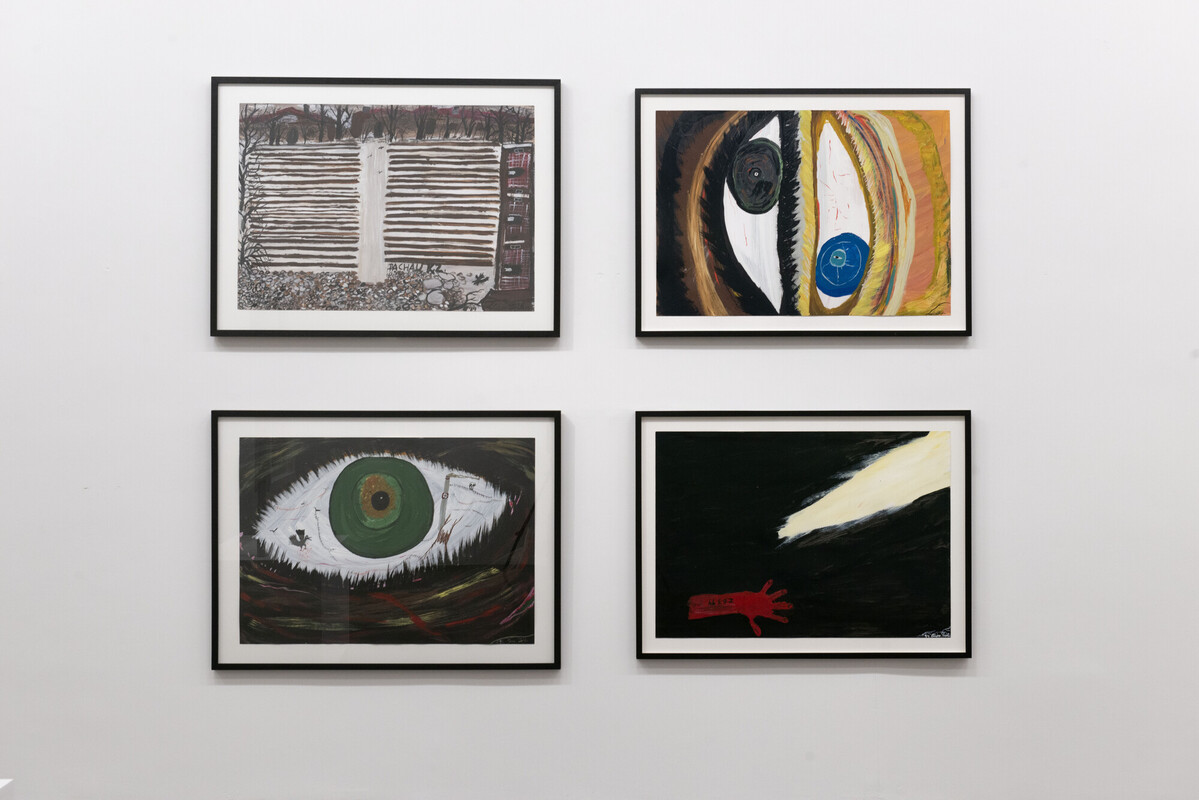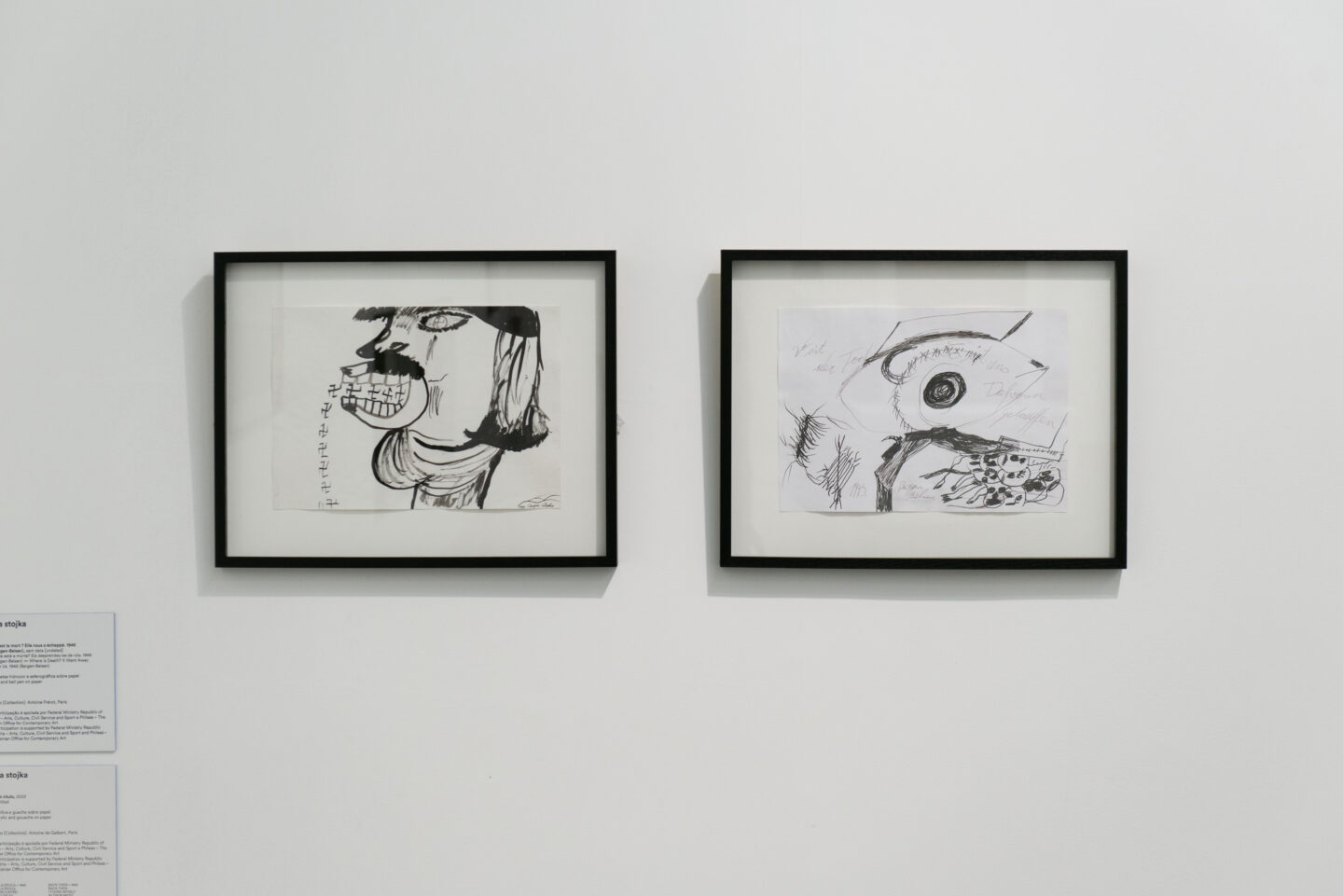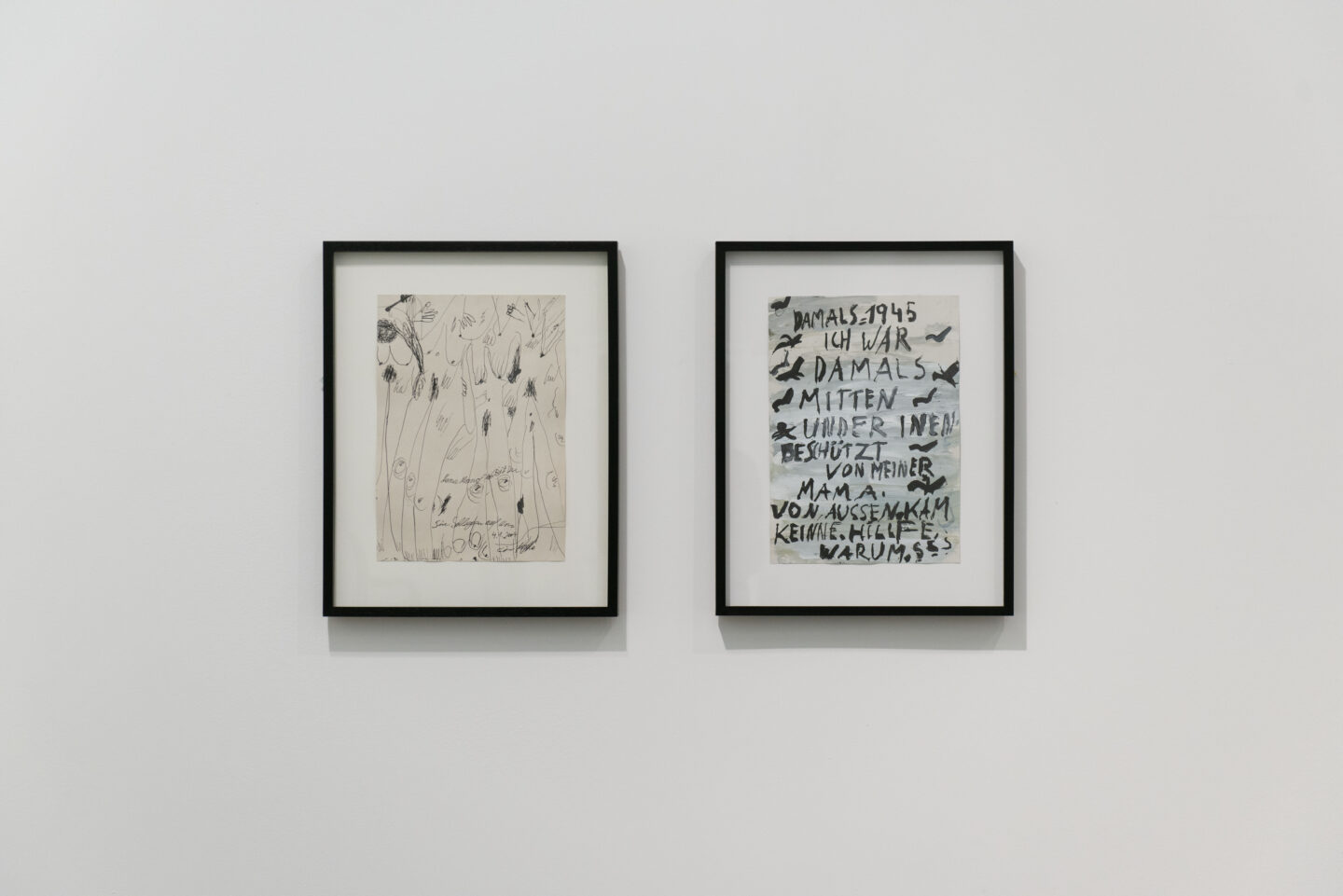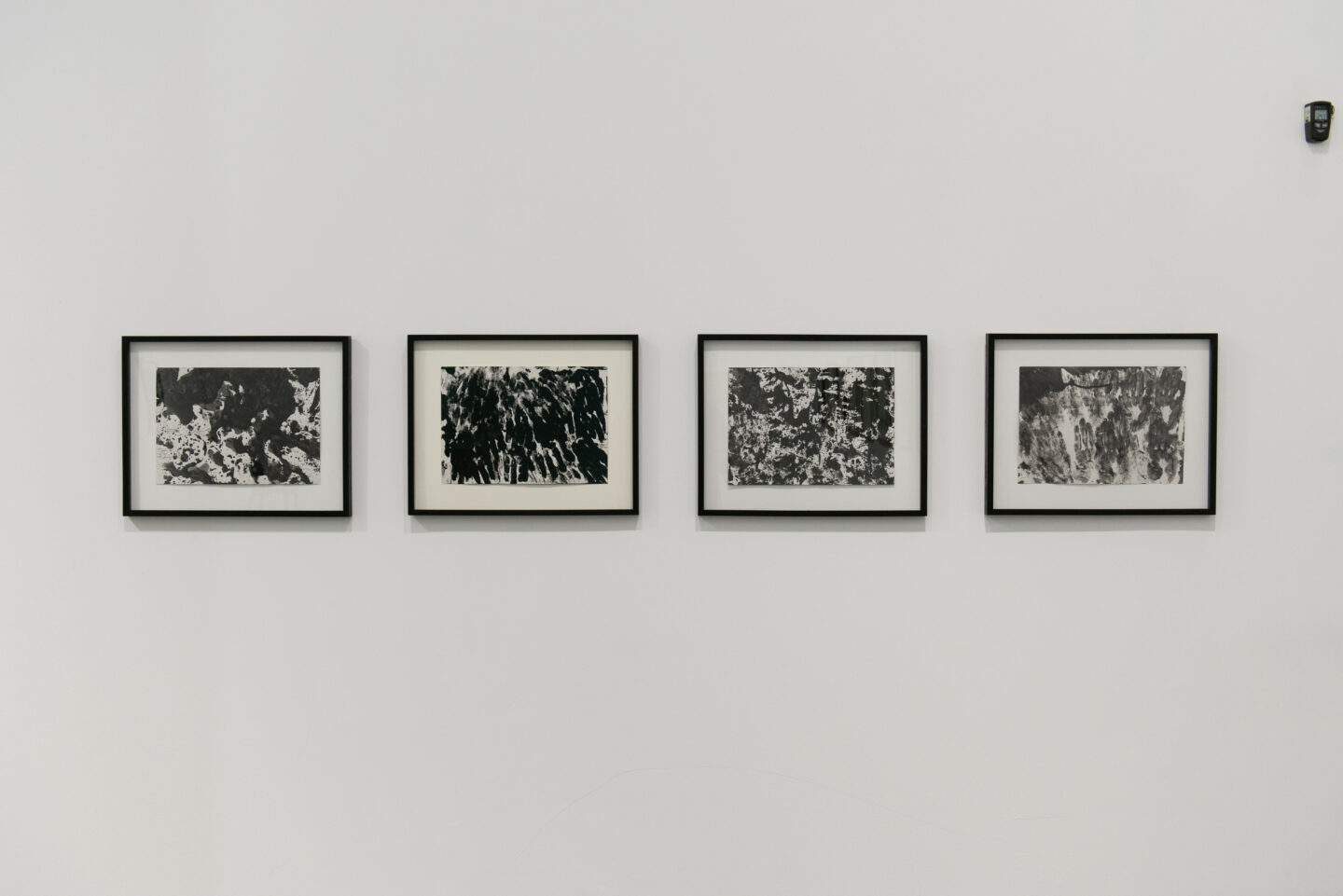
Ceija Stojka
It was only forty years after her deportation that Ceija Stojka was able to resurrect from her hands the tragedy of her plunge, at age eleven, into the hell of genocide. Exhumed from the limbo of her memory, Nazi persecution and genocide were the raw material of her work, composed of drawings, paintings, and writings that are impressive for their intensity and extraordinary poetics.
Paradoxically, as part of the Roma people,¹ Stojka is heir of an oral tradition. A real memorial and cultural handicap when it comes to accounting for the “forgotten genocide” her people were victims of. Her choice to “enter” painting, drawing, and writing was an act of radical rupture with her tradition. Connected, the three intersect and intertwine, without merging completely.
Many of her drawings and paintings are marked by words, signs, and brief phrases. A graphic melopeia unfolds in a work whose polychromy imparts a tragic intensity to the landscapes of disaster. Her works associate hallucinations, visual anticipations, and the signs of these territories of death and their protagonists. In her landscapes, the gazes of the pursuers and the killers flicker like prefigurations of the unname-able. Her drawings conjugate the sharp outlines of anonymous martyrs with the ghosts of those absent, already dissolved in death.
Her work oscillates from the lost paradise of life before the time of the hunt, to the moment when the cart gives way to the wagon of the “train of catastrophe,”, and ends in this archipelago where “not even the dead will be safe”.² She configures the tragic trajectory of these bodies stripped of their humanity and thrown into the hell of genocide. There is something of Dante’s Inferno. A great beauty transcends its “no savoir-faire” in quality.
philippe cyroulnik
translated from Portuguese by philip somervell
Ceija Stojka (Kraubath an der Mur, Austria, 1933 – Vienna, Austria, 2013) was an artist, writer, and musician. Of Romani origin, she survived the Auschwitz-Birkenau, Ravensbrück, and Bergen-Belsen concentration camps, an experience she depicted in her drawings and paintings. She recorded the album Me Diklem Suno and published the books Wir leben im Verborgenen – Erinnerungen einer Rom-Zigeunerin (1988) and Reisende auf dieser Welt (1992). Her works are part of the collection of the Museo Reina Sofía (Madrid, Spain).
1. Ceija Stojka belonged to a Lovara Roma family, a traditionally nomadic ethnic group currently living in different regions of Europe and speaking variations of the Romani language. [e.n.]
2. Walter Benjamin, “On the concept of history – Thesis V” (1940).
- Vista de obras de Ceija Stojka durante a 35ª Bienal de São Paulo – coreografias do impossível © Levi Fanan / Fundação Bienal de São Paulo
- Vista de obras de Ceija Stojka durante a 35ª Bienal de São Paulo – coreografias do impossível © Levi Fanan / Fundação Bienal de São Paulo
- Vista de obras de Ceija Stojka durante a 35ª Bienal de São Paulo – coreografias do impossível © Levi Fanan / Fundação Bienal de São Paulo
- Vista de obras de Ceija Stojka durante a 35ª Bienal de São Paulo – coreografias do impossível © Levi Fanan / Fundação Bienal de São Paulo
- Vista de obras de Ceija Stojka durante a 35ª Bienal de São Paulo – coreografias do impossível © Levi Fanan / Fundação Bienal de São Paulo
- Vista de obras de Ceija Stojka durante a 35ª Bienal de São Paulo – coreografias do impossível © Levi Fanan / Fundação Bienal de São Paulo
This participation is supported by Federal Ministry Republic of Austria – Arts, Culture, Civil Service and Sport and Phileas – The Austrian Office for Contemporary Art.

 Português
Português




